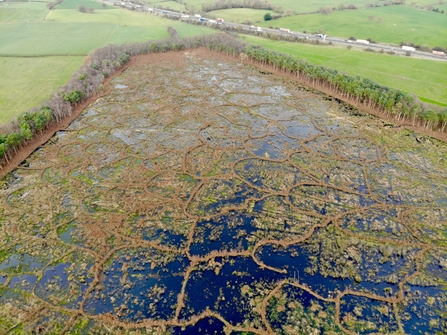|
Devastating climate impact of using peat in UK horticulture revealed
The delay to ban the sale of peat is ludicrous, when we know that to halt climate change we need to act right now. As a conservation charity we’re doing our best to restore our counties damaged peatlands, but we need our supporters help to address this nationally important issue.Staffordshire Wildlife Trust
|
The analysis estimates that as much as 31 million tonnes of CO2 could have been released into the atmosphere since 1990, as a direct result of using peat in gardening, and its use by professional growers of fruit, vegetables, and plants. The campaign to stop peat extraction took off in the 1990s but only now are the UK and Welsh Governments conducting a public consultation on ending the use of peat in the retail sector in England and Wales by 2024. The Wildlife Trusts believe we cannot wait this long. As well as analysing the impacts of peat extraction in the UK, The Wildlife Trusts found that the UK ‘offshores’ most of its peatland emissions and damage to wildlife to the countries who dig peat up to sell it in the UK. Currently, emissions from these imports are not counted in the UK's greenhouse gas emissions figures. Despite thirty years of campaigning against extraction and increased public outcry, peat continues to be sold in vast quantities for amateur and professional horticultural use, with huge consequences for nature and climate. Industry progress towards peat-free alternatives has been slow and inconsistent, and between 2018-19 peat consumption in the UK declined by just 2.3 per cent, before rapidly increasing by 9 per cent as lockdown drove more people to buy compost for gardening. On average, annual UK peat sales would fill 29,000 large shipping containers and could release up to 850,000 tonnes of CO2 . In 2020 alone, nearly 900,000 cubic metres of peat were extracted from UK soils, with a further 1.4 million cubic metres of peat imported from Ireland and the rest of Europe. A total of just over 2.29 million cubic metres of peat were dug up to be sold in the UK market in 2020, with a small quantity also being exported to other countries. If peat is left undisturbed – in bogs, not bags – this quantity of peat could have stored approximately 238,000 tonnes of carbon for millennia to come. However, once peatland habitats are disturbed for extraction, stored carbon becomes carbon dioxide (CO2) and is lost to the atmosphere forever, contributing directly to climate change. The peat extracted for UK horticulture in 2020 could release up to 880,000 tonnes of CO2 over its lifetime as a growing medium. 880,000 tonnes of CO2 is equivalent to driving an average passenger car 2.2 billion miles – to the moon and back more than 4,600 times. Ailis Watt, peat officer at The Wildlife Trusts, says: “These losses are gigantic, irrecoverable and unjustifiable. Peat and the carbon stored within it simply cannot be replenished within human lifetimes. Each time governments dither over whether to ban peat use in horticulture, we risk losing more of this habitat that has taken millennia to develop, as well as losing its huge capacity for carbon storage. “Extracting peat is bad for our climate and for wildlife. Peatlands provide habitat for a rich diversity of plants and animals. Migrating birds feed on peatland insects, while snakes and lizards also thrive in these special places. The UK is already one of the most nature-depleted countries in the world and extracting peat destroys complex ecosystems that are vital for nature’s recovery. It has to stop. “Investing in peatland restoration whilst allowing extraction to continue is illogical and an inefficient use of public funds.” |

Craddocks Moss by Ben Wiles. A unique lowland raised bog which was purchased by SWT in 2020.
|
Jeff Sim, Staffordshire Wildlife Trust’s Head of Nature Reserves, said: “The delay to ban the sale of peat is ludicrous, when we know that to halt climate change we need to act right now. As a conservation charity we’re doing our best to restore our counties damaged peatlands, but we need our supporters help to address this nationally important issue. “Our work includes restoration of moorland habitats in the South West Peak District area and we’ve recently purchased another lowland peat bog at Craddocks Moss (pictured above). “Many years ago this site was drained and planted with conifers. This damaged the peat and destroyed the important habitat it provided. After conifer removal and rewetting, we now hope with careful management we can return it to a haven for curlew and white faced darter dragonflies.” The Wildlife Trusts are calling for an immediate ban on the sale and extraction of peat for horticulture, and a ban on importing peat from abroad. According to our recent analysis, waiting until 2024 to ban peat use could add more than 1.5 million tonnes of CO2 to our atmosphere (roughly equivalent to the annual greenhouse gas emissions of more than 214,000 UK residents) while further contributing to species and habitat decline. Bringing about an end to all uses of peat is an obvious step that UK Governments can take to put nature into recovery and transform peatlands from carbon emitters into carbon sinks. The Wildlife Trusts are urging the public to respond to the Government consultation – it is open until 18th March 2022. |
